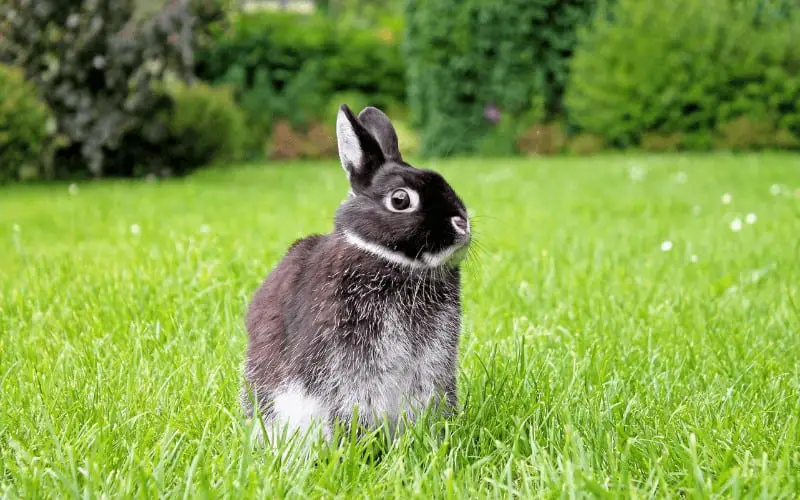Netherland Dwarf rabbits are the smallest domesticated rabbit breed. They are one of the cutest and most lovely pets you can ever have. They weigh 2.5 pounds (900g) when fully grown – and in this article, we’ll show you some intriguing Netherland dwarf rabbit facts that you need to know.
Their smallish and babyish yet, attractive nature made very popular among pet lovers, becoming the highest-selling pet in 2018, with over 13-18% sales. The Netherland Dwarf breeds mysteriously have an assertive and aggressive nature.
Now, let’s quickly look at some essential facts about the Netherland Dwarf rabbits, including their historical background, origin, and how to care for Netherland dwarf rabbits.
Netherland Dwarf Rabbit Facts
Let’s quickly run through some interesting Netherland Dwarf Rabbit facts that you’d love to know.
We believe it will help you know exactly what kind of pet you are about to own and how to deal with them.
- Netherland dwarf rabbit was first discovered in Netherlands (previously Holland) in the 1900s
- Netherland Dwarf rabbit breeds were introduced in England in 1948 and the United States in the 1960s
- The American Rabbit Breeder’s Association formally accepted this breed of rabbit in 1969
- The Netherlands Dwarf Rabbit are very easy to train and possess the same way of life or pattern as bigger pets like dogs and cats. It all depends on the time you will devote to giving them the kind of training they require.
- The Netherland Dwarf Rabbit may look smallish, yet, they are pretty aggressive and robust, especially during playtime and exercise. On the ordinary eyes, they seem so brittle, but when you handle them, they are tenacious and tougher.
- Most Netherland Dwarf rabbits are constantly agitated, especially when new in the environment, and therefore, they exhibit wild temperament. But that is normal. You will find out that it has a fantastic temperament with time because they’ve gotten acquainted with you. Initially, it may look nervous, but it will come good when you start giving it the proper care and attention from an early age.
- One key fact about the Netherland Dwarf rabbit is its tendency to overgrow molars and enamel spurs. That is the regular health occurrence that is associated with it. However, you can keep it in check through the provision of sufficient roughages that helps to decay the teeth and provide them with something to chew frequently. It prevents overgrown teeth.
- The Netherlands Dwarf rabbit will require many toys and your time with them. This will help to keep their senses alert while emitting energy.
- The comfortability of these rabbits requires a spacious environment where they can jump, play around, and exercise. Therefore, you must consider this when looking for a place to house them. Fortunately, they can live inside or outside, in as much as you can provide them with the comfort they desire, through a spacious area.
- Avoid excessive grooming of their furs as there are seasons when the furs fall off on their own at a moderate rate (happens a few times in a year during the shedding season). Maybe, this is the time that is required of you to brush it more, but carefully.
History of the Netherland Dwarf Rabbit
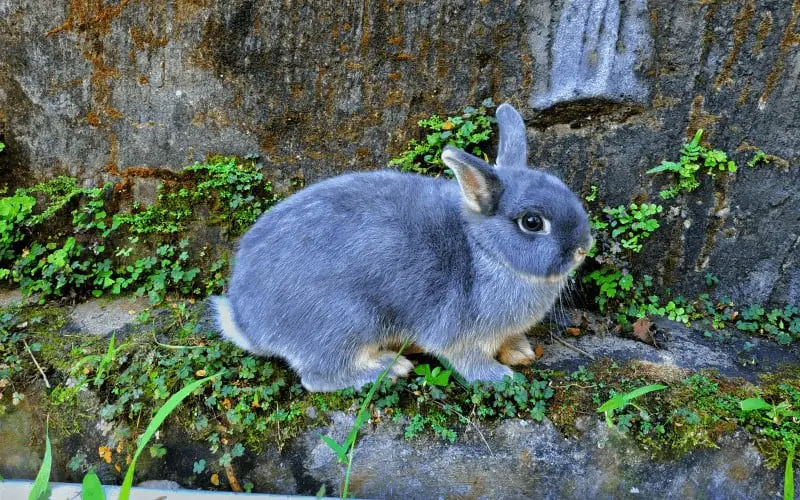
They are called the Netherland Dwarf Rabbits because they were first discovered in the Netherlands, previously Holland, in the 1900s.
They were generated out of the small Polish rabbit breeds that were interbred with the small wild rabbits.
The Netherland Dwarf rabbit breeds were introduced in England in 1948. Then, in the 1960s, they were introduced in the United States and were formally accepted by the American Rabbit Breeder’s Association in 1969.
These rabbit breeds are very dwarf. In other words, they possess the dwarf gene. Most people often confuse them with the Holland Lop, as they both possess compact body types.
Yet, the apparent difference between them is that the Holland Lop is the most miniature lop, whereas the Netherland Dwarf is the smallest rabbit.
The Netherland Dwarf rabbits are smallish in size because of their dwarf gene. This dwarf gene was discovered in the mid-1900s when a Holland breeder was the first to use this gene to produce very smallish rabbits.
To date, they remain one of the most renowned breeds in the U.S.
Netherland Dwarf Rabbit Origin
The origin of the Netherland Dwarf rabbit can be traced back to Holland, in the Mid-1900s, when a group of five men, led by Jen Meyering, toiled for over 30 years to produce a standardized little rabbit would be approved and obtainable in different colors.
These men started by breeding all-white Hermelin rabbits with local wild rabbits and other homegrown breeds before finally producing the Netherland Dwarf rabbit breed.
It was officially acknowledged first in Holland in 1940, but World War II thwarted its continuous development.
Some men from England were apportioned some of the available Netherland Dwarfs in different colors in 1947, formally acknowledged as a breed by the British Rabbit Council in 1950.
Meanwhile, a Netherland Dwarf Club was established in England in 1949. Then as far as America is concerned, the Netherland Dwarf breed was first introduced in 1965 in the Northern part of America.
It was introduced in this area to breed and better the Polish rabbit breed in the United States.
Netherland Dwarf Rabbits Characteristics
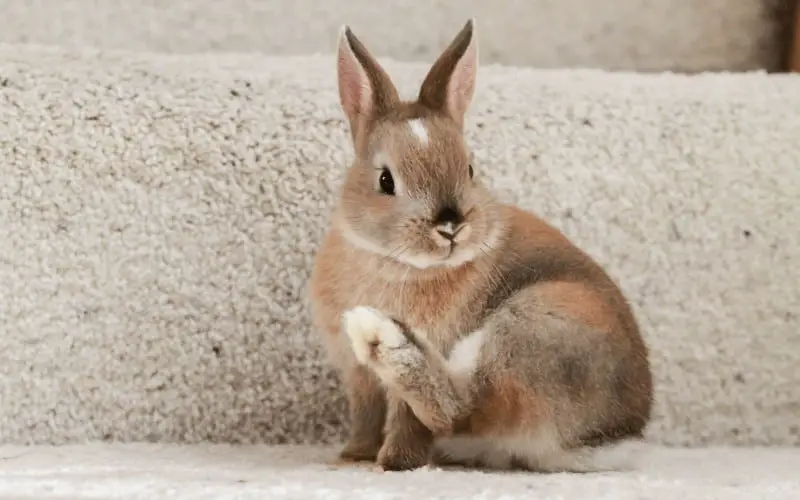
The Netherland Dwarf rabbit has some attractive physical traits that make it one of the best rabbit breeds and is said to be the most purchased pet, garnering over 13-18% on sales, more than every other pet.
Physical Appearance
The Netherland Dwarf rabbit breed is the smallest domesticated rabbit breed. It is one of the cutest and most lovely pets you can ever have.
It looks smallish and babyish yet, possesses attractive features that have made it a very renowned pet.
They are entirely grown and carries a weight of 2.5 pounds (900g). This breed has always looked like a kit all their life.
It has a thick body, a large head, a short face, small ears and big eyes. It has ears that appear to be a bit displaced since they look small and straight on their large head, with short legs.
Fur
As far as its fur is concerned, the Netherland Dwarf rabbit possesses lovely and tender fur between short to medium in length while also being soft and doesn’t require excessive grooming.
Its furs will fall off, but at a moderate rate, and it usually happens few times in a year during the shedding season. At this time, it is advisable to brush it more.
Color
The Netherland dwarf rabbit breed has various beautiful colors recognized by the ARBA (American Rabbit Breeder’s Association). These colors are divided into five groups: self, shaded, agouti, tan, and other types.
Its most striking colors are black, blue, chocolate, orange, tortoiseshell, sable point, blue tan, lynx, lilac, fawn, opal, black silver marten and chinchilla. No doubt, these are all lovely colors that attract pet owners to purchase them as pets.
Temperament
The Netherland Dwarf rabbit breed has a fantastic temperament immediately they get acquainted with you.
Initially, it may look timid and as though it’s frightening, but that is normal, considering it does that mostly when it is new to a home or the people it sees around it.
Therefore, you have to make it feel comfortable and handle it with care, so it will know there’s nothing to be afraid of. Also, learn to afford it privacy, especially when you brought it for the first time into your home.
However, with proper socialization and human interaction, the rabbit will grow fond of its owners. Immediately it starts being comfortable; you will find it to be a very affectionate rabbit, which will like to be around you always.
It also exhibits excitement and always tends to be energetic, hopping tirelessly around the house.
They can be very playful, especially when they are comfortable and happy and when they are well fed. Try to get them a toy also, to relieve them of boredom.
Netherland Dwarf Rabbit Care
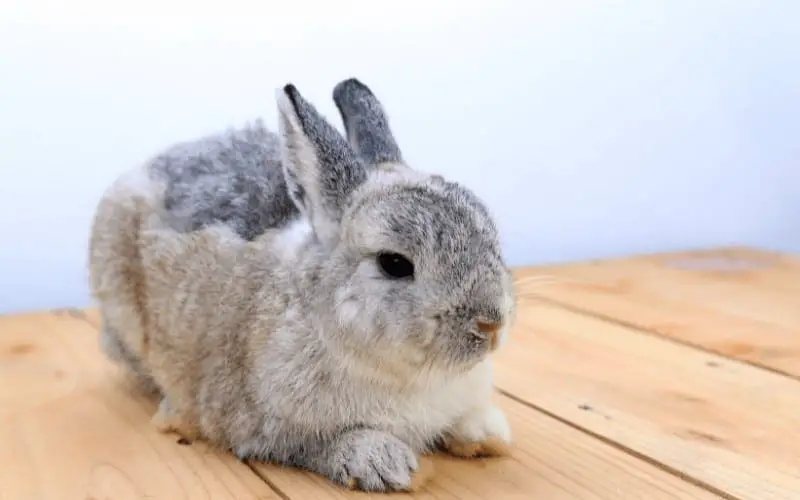
It is imperative to give your Netherland Dwarf rabbit breed as much care as possible to ensure its healthy and comfortable state, which also goes a long way in ensuring its longevity.
Below are the common care guide or factors for your Netherland Dwarf rabbit.
Housing/Hutch Care Guide
As a rabbit owner, there are certain things you must consider and put in place before purchasing and bringing home, not just the Netherland Dwarf breed but also other rabbit breeds, and proper housing is one of them.
To build a good cabinet for your bunnies, you must consider many factors, and vital among them are the hutch size, location and cleanliness of the environment.
Even though they are the most miniature rabbit breeds, they still require a lot of room to live.
According to experts’ findings, the minimum size requirement for a rabbit hutch is 18×24 inches high to afford them more freedom for their play and exercises.
You should also ensure the cabinet’s internal and external surroundings are kept clean. Endeavour to clear every dropping as often as possible and scrub the cabinet at least once a week to help keep its surroundings healthy.
Again, location-wise, the Netherland Dwarf rabbit needs a cabinet located in a place that is free from drafts.
If you want it to live outside, which isn’t the best alternative, it will undoubtedly need well-fenced and protected housing to keep him safe from dangers and sufficient nest hay to settle in for warmth.
Also, let the housing be in a place that offers shades from direct sunlight, and always provide two liters of a frozen water bottle in the hutch on hotter days because it is very allergic to heat; hence it will help cool the surrounding.
Feeding/Nutrition Care Guide
The Netherland Dwarf rabbit’s food must include pellets, fresh hay, clean water, and fresh vegetables. Nevertheless, their diet varies with age, so it’s imperative to feed age-appropriate foods to prevent stress in its digestive system.
Again, most of these rabbits are different in their ability to grow fat or thin, and feeding is a significant factor.
Therefore, always try to monitor this condition to know when to increase or decrease the number of pellets or other food you feed them.
Exercising/Training Care
Just like every other domestic pet, your Netherland Dwarf rabbit requires constant exercising and playtime. You can take them on a short work around the house or outside sometimes.
They can also be trained from the start to learn to use the litter cages to relieve themselves.
Most times, you have to apply strict and disciplinary methods to make them obey you, but don’t be excessively harsh since they become frightened quickly.
Also, try to sterilize them to avoid inappropriate behavior as they grow older.
Veterinary
Your Netherland Dwarf rabbit needs regular veterinary care, which can help you identify issues before it becomes too late.
Bunnies, like other pets, also need annual checkups. It will also help in diagnosing any possible diseases that might not be physically seen.
According to Center Sinai Animal Hospital findings, there are notable viral diseases that pet rabbits can contract; hence, they need to be vaccinated against such diseases. Some of those diseases include; Viral Haemorrhagic disease, Myxomatosis and so on.
There is also the possibility of parasites like fleas, mites, and others in their body, hence the need for veterinary attention to help control and protect your Netherland Dwarf rabbit from these parasites.
Deworming of your pet rabbit is also essential to prevent it from being robbed of every available nutrition. Watch out also for its dental conditions.
It needs to chew frequently to avoid overgrowing teeth. For other dental problems, contact your veterinarian.
Grooming Tips
Beware of excessive brushing of your Netherland Dwarf rabbit because they can keep themselves clean. However, they may require a little bit of grooming to help remove excessive furs when undergoing shedding periods.
However, when doing this, you can make use of a soft brush. While brushing, you can use that opportunity to explore any possible parasites in them.
With the help of a cat claw trimmer, ensure you trim their nails regularly. If you can’t do it properly, contact your veterinarian for help.
Final Thoughts
Generally, the Netherland Dwarf rabbits are very easy to care for. What you need is to adhere to the rules and factors above.
They will also use your attention each day, as it will enable you to care for them properly and spot any danger to their potential health before it gets out of hand.
In addition to good diets, clean hutch and playtime, the above should help keep your Netherland Dwarf rabbit healthy, happy and comfortable and will equally ensure their longevity.
Related Posts:
- What Breed Of Rabbit Lives The Longest?
- Can Rabbits Live Outside In Winter?
- What Does It Mean When a Guinea Pig Chirps?
- Can A Rabbit Die Of A Broken Heart?
- Can Rabbits Live Outside All Year Round?
Midwest Wabbitat Folding Rabbit Cage
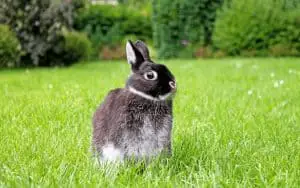
Wabbitat is the perfect rabbit habitat. It’s durable, affordable, and it makes the best starter home for your furry family member. Wabbitat sets up easily in seconds with no tools or connecting pieces needed for assembly. It features unique slide-latches on the large top and front door openings for one-handed operation, allowing ease of use when interacting with your pet or taking him in or out of his home.
Product SKU: B0002AT3K6
Product Brand: Midwest Wabbitat Folding Rabbit Cage
4.5
Pros
- Sturdy and functional cage
- Easy to Assemble
Cons
- Metal tray is hard to take off for cleaning
- Flimsy tray
